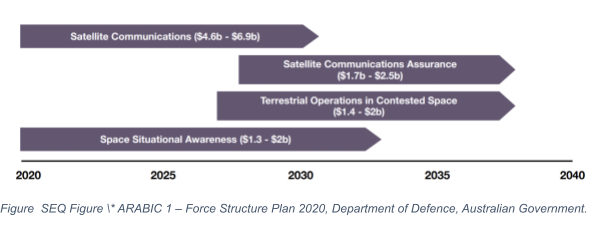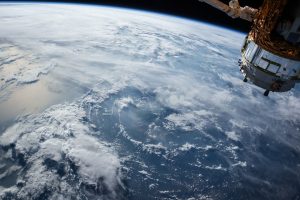Australia’s independent satellite communications (SATCOM) program, Joint Program (JP) 9102, sets a new standard for nations in the Indo-Pacific to invest in their own space communication capabilities to reduce dependence on allied nations and counter growing Chinese influence. While many Indo-Pacific countries have begun to invest in space, the likelihood of individual countries acquiring a system like Australia’s JP9102 SATCOM program remains slim given the cost constraints of developing space networks.
Global reliance on satellites is extensive. As U.S. Representative Jim Cooper (D-TN) stated in 2019, “We are almost as reliant on satellites as we are on the sun itself.” Satellites are used to power all major communications networks as well as energy, trade, and financial networks. Militaries further use them for secure military communications, missile warning systems, and navigation systems like GPS. Therefore, space has become one of the most important realms of warfare, with its own intricacies that are not merely an extension of current land, sea, or air operations.
Australia’s 2020 Force Structure Plan identifies the importance of the space domain and the limitations of Australia’s current system. To remedy the space capability gap, Australia created the Australian Defense SATCOM System (ADSS) by committing 7 billion Australian dollars toward space capabilities over the next decade, AU$3 billion of which fall under JP9102 and will enhance SATCOM capabilities. Figure 1 provides a more detailed account of Australia’s key space domain investments.

Australia currently relies on the U.S. military’s Wideband Global SATCOM (WGS) network, to which it has access because it helped fund WGS-6, one of the network’s 10 satellites in geostationary orbit. Access to the WGS can take anywhere from days to weeks. Through this arranged partnership, Australia has access to the WGS network until 2029. However, the raging wildfires of early 2020 emphasized the need for Australia to invest in its own network. The Australian Defense Force (ADF) mobilized several joint task forces for the crisis and leaned on the WGS system to coordinate operations among the different services. While the United States granted access within 24 hours, it became clear that Australia could not rely on another nation for an essential service given the changing landscape of the Indo-Pacific.
Australia’s JP9102 program facilitates communication between the services, crucial to streamlining joint operations, through two distinct categories. The first is high mobility narrowband SATCOM for tactical communications on the field, reaching individual soldiers equipped with satellite radios. The second is a high capacity wideband, a more strategically focused capability based on fixed locations or platforms requiring high data output such as naval vessels or various aircraft systems. Using these systems is possible through extensive ground infrastructure, which Australia has consistently invested in over the past decade.
The cost of space technologies, both ground infrastructure and the satellites themselves, is the main obstacle for nations to develop independent space capabilities rather than rely on allies’ networks. Increased growth of the commercial space sector, which has accelerated the development of cheaper systems with higher interoperability, has aided the acquisition of space technologies. Several Indo-Pacific nations, including Indonesia, Malaysia, New Zealand, Singapore, and Vietnam, have already begun to expand their space systems, though with heavy multilateral cooperation, not independent systems.
While some of these Indo-Pacific nations have begun to expand their space systems, they have done so primarily through increased research and development (R&D), rocket launches, and local production of microsatellites – primarily used for data collection. The JP9102 program’s improvement of capabilities necessary for interservice communication facilitates joint operations as the most crucial aspect of the program. This feature elevates the military effectiveness by easing reliance on land-based communications and providing more resilient communications through dedicated SATCOM capabilities.
India, for example, is investing in its military to establish itself as a key force in the Indo-Pacific through alliances like the Quad – which joins the United States, Australia, Japan, and India to coordinate their strategic approaches in the Indo-Pacific. However, India lacks interservice operability, a growing pain that can improve through the improvement of military communications infrastructure, facilitating joint service missions. Following Australia’s lead in the investment of SATCOM capabilities, including the development of ground infrastructure needed to support the deployment of satellites, would further elevate their current military effectiveness.
Over the past decade, China’s assertiveness in the Indo-Pacific has grown considerably, leading to the focus of most defense efforts in the region. China has also invested heavily in its space capabilities and, in 2019, became the first nation to land a rover on the far side of the moon. However, of graver concern is China’s development of anti-satellite weapons, which seek to counter enemy satellites, transforming space into a contested domain. It has, therefore, become imperative for militaries in the region to develop independent capabilities to counter growing Chinese influence.
Lastly, while SATCOM capabilities are crucial for expanding military influence in the region, they are also critical to the support of natural disaster rescue missions, which like Australia’s devastating wildfires of early 2020, are becoming increasingly frequent. Regional militaries involved in rescue efforts require reliable communications systems to facilitate coordination between the different elements involved in rescue missions, often joint operations involving several nations and services.
So, while Australia’s JP9102 SATCOM requirement sets an important precedent in the region, the cost of developing adequate individual space systems will delay the local development of similar systems. Nevertheless, regional efforts to increase space capabilities remain a vital effort in countering China’s efforts to control the space domain and secure influence in the Indo-Pacific.

































